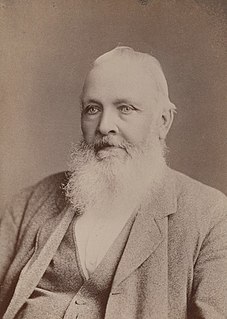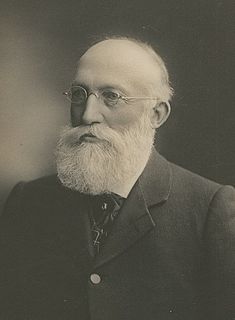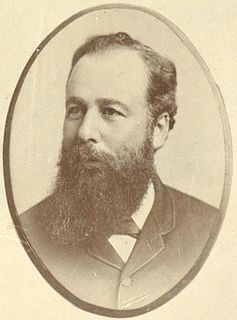Related Research Articles
Peacock & Son was a tanning and wool-brokering business in the early days of South Australia. Three members of the family were notable public figures: William Peacock was a successful businessman and one of the colony's first parliamentarians. His eldest son Joseph Peacock carried on the family business and was a member of parliament. His youngest son Caleb Peacock was a member of parliament and Mayor of Adelaide from 1875 to 1877, the first such born in the Colony.

Cornish Australians are citizens of Australia who are fully or partially of Cornish heritage or descent, an ethnic group native to Cornwall in the United Kingdom.
May Brothers and Company was an engineering and manufacturing firm founded in Gawler, South Australia in 1885 by Frederick and Alfred May.
Lion Brewing and Malting Company of Jerningham Street, Lower North Adelaide was one of the many breweries which proliferated in Australia in the nineteenth-century. In those days beer was much cheaper than now; the wholesale price was 1/ a gallon, but transport was expensive, and small breweries were to be found all over the country. Most of these have now disappeared, having either closed down or become merged in larger businesses. Lion Brewing and Malting eventually confined itself to malting barley and manufacture of aerated waters and cordials.
Francis Clark and Son was an engineering business in the early days of South Australia, which later became Francis Clark and Sons.

John Stokes Bagshaw was a manufacturer of agricultural machinery in South Australia.
George Edward Fulton was an engineer who ran an iron and steel foundry in the early days of South Australia.

Edward John Woods F.R.I.B.A. was a prominent architect in the early days of South Australia.

Henry Simpson, often referred to as "Captain Simpson", was a ship's captain, ship owner and businessman in South Australia.
William Henry Beaglehole was born at Helston, Cornwall, and came to South Australia on the Prince Regent with his mother, the widow Elizabeth Beaglehole and brother John, arriving in July 1849.

John Moule was a wheat merchant and politician in the colony of South Australia.

Moonta Mines is a locality at the northern end of the Yorke Peninsula, adjoining the town of Moonta. It is located in the Copper Coast Council. From 1861 to 1923, it was the centre of a copper mining industry that formed colonial South Australia's largest mining enterprise. A substantial portion of the locality is listed on the South Australian Heritage Register as the Moonta Mines State Heritage Area and on the National Heritage List as the Australian Cornish Mining Heritage Site, Moonta Mines.

Duncan & Fraser Limited was a vehicle manufacturing company founded in 1865 in Adelaide, South Australia that built horse-drawn carriages and horse trams, and subsequently bodies for trains, electric trams and motor cars, becoming one of the largest carriage building companies in Australia.
The Moonta Cemetery in Moonta, South Australia was established under the Moonta Cemetery Trust in May 1866. Burials had occurred prior to that, with the town having been surveyed and land sold in March 1863. Plans for the cemetery were made in 1867 with walls erected between 1871 and 1876, the front gates made by J. H. Horwood and Co. of Adelaide. J. H. Horwood and Co. also cast the copper bell installed in 1896.
Alfred Hannaford was a South Australian inventor and industrialist, remembered for his wheat pickling machines.
William Henry Gray, generally known as W. H. Gray, was a pioneer colonist of South Australia who amassed considerable wealth through ownership and development of land.
Peter Dowding Prankerd was an English businessman who made a fortune in Colonial South Australia real estate.
Henry Richard Hancock almost invariably referred to as "Captain Hancock" was a mine superintendent in Moonta and Wallaroo, South Australia. He was noted for his business acumen and the respect with which he was held by both workers and mine owners.
James Hebbard was a miner who became manager of the Great Central Mine, Broken Hill.
Henry Binney Hawke, usually referred to as H. B. Hawke, was an industrialist in Kapunda, South Australia, founder of the manufacturing business which became H. B. Hawke & Co.
References
- ↑ "Large Spur Wheel". South Australian Register . Adelaide. 11 February 1863. p. 2. Retrieved 29 January 2012– via National Library of Australia.
- ↑ Advertisement South Australian Register 6 November 1866 p.1 Retrieved 19 June 2011
- ↑ Colonial Iron Works South Australian Register 15 May 1869 p.2 Retrieved 19 June 2011
- ↑ Miscellaneous South Australian Advertiser 27 May 1864 p.6 Retrieved 19 June 2011
- ↑ "Death of Mr. Joel Horwood". Bendigo Advertiser . Vol. XLVIII, no. 14, 007. Victoria, Australia. 5 May 1900. p. 5. Retrieved 15 August 2016– via National Library of Australia.
- ↑ "Probate". The Bendigo Independent . No. 8334. Victoria, Australia. 30 May 1900. p. 4. Retrieved 14 August 2016– via National Library of Australia.
- ↑ "Founder makes an entrance | %Bendigo news%". Archived from the original on 18 August 2011. Retrieved 18 June 2011.
- ↑ Sudden Death of Mr. E. J. Horwood Barrier Miner 14 November 1940 p.3 Retrieved 19 June 2011
- ↑ Topics of the Day South Australian Advertiser 20 May 1869 p.2 Retrieved 19 June 2011
- ↑ Personal The Argus (Melbourne) 28 September 1915 p.6 Retrieved 19 June 2011
- ↑ "Intimidation at Moonta". South Australian Register . Adelaide. 7 May 1874. p. 4. Retrieved 21 January 2012– via National Library of Australia.
- 1 2 "Concerning People". The Register . Vol. LXXVIII, no. 20, 728. Adelaide. 18 April 1913. p. 4. Retrieved 15 August 2016– via National Library of Australia.
- ↑ Obituary The Advertiser 10 September 1927 p.16 Retrieved 16 June 2011
- 1 2 Cumming, D. A, Moxham, G They Built South Australia Published by the authors February 1986 ISBN 0-9589111-0-X
- ↑ "Horwood Bagshaw Australia Limited - Corporate entry - Guide to Australian Business Records".
- ↑ Horwood Bagshaw Limited The Advertiser 30 June 1954 Retrieved 17 January 2011